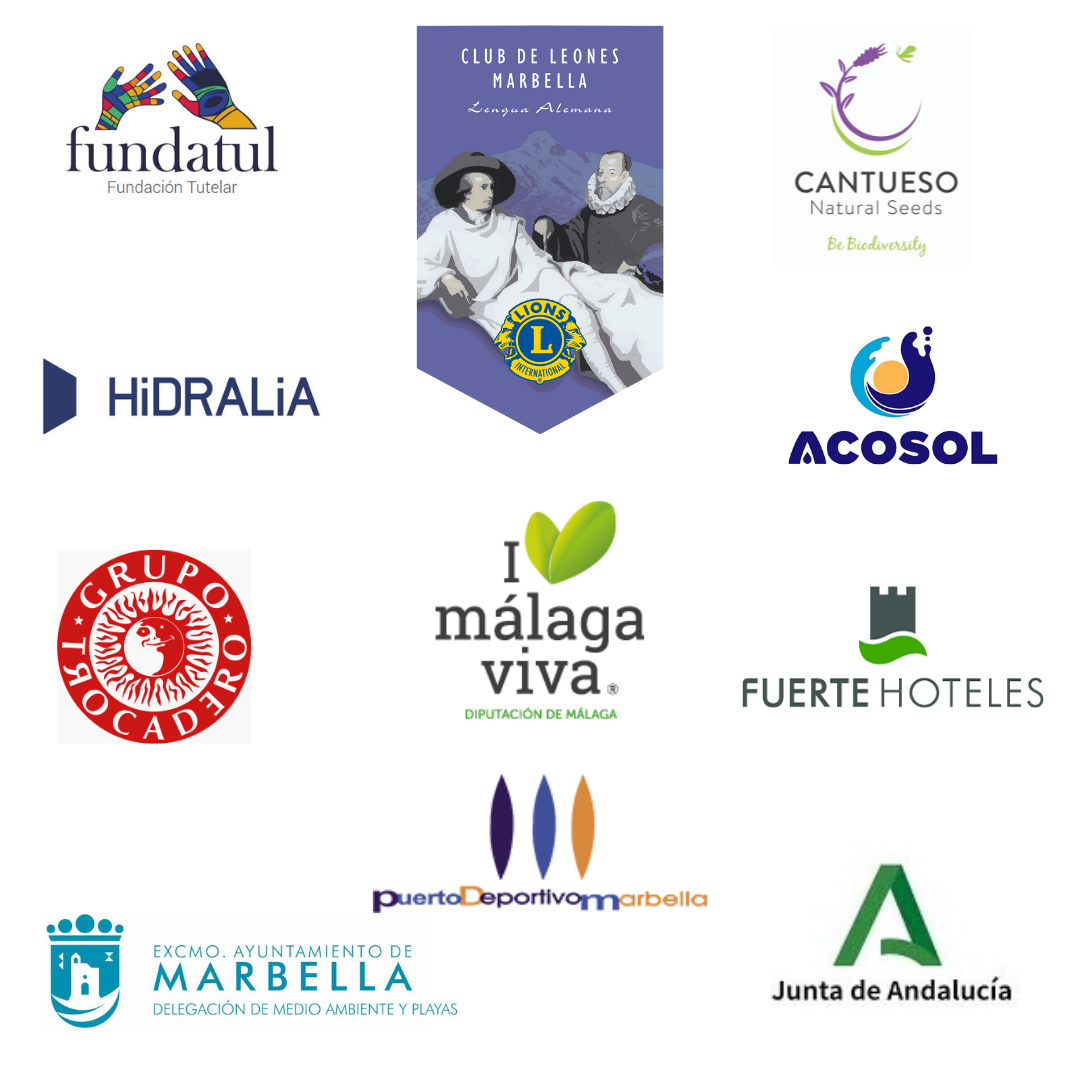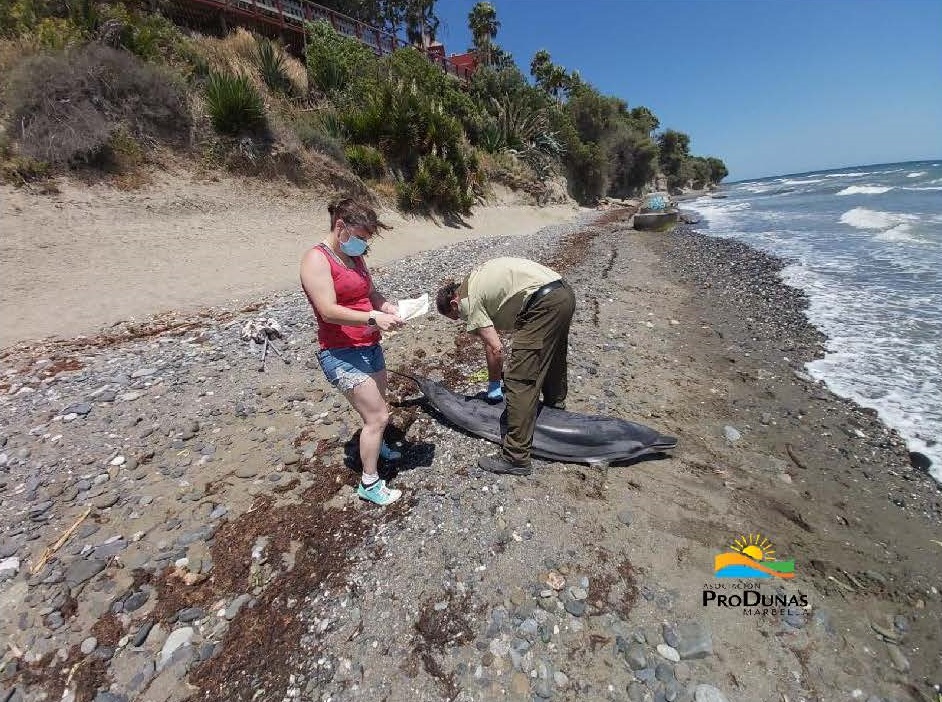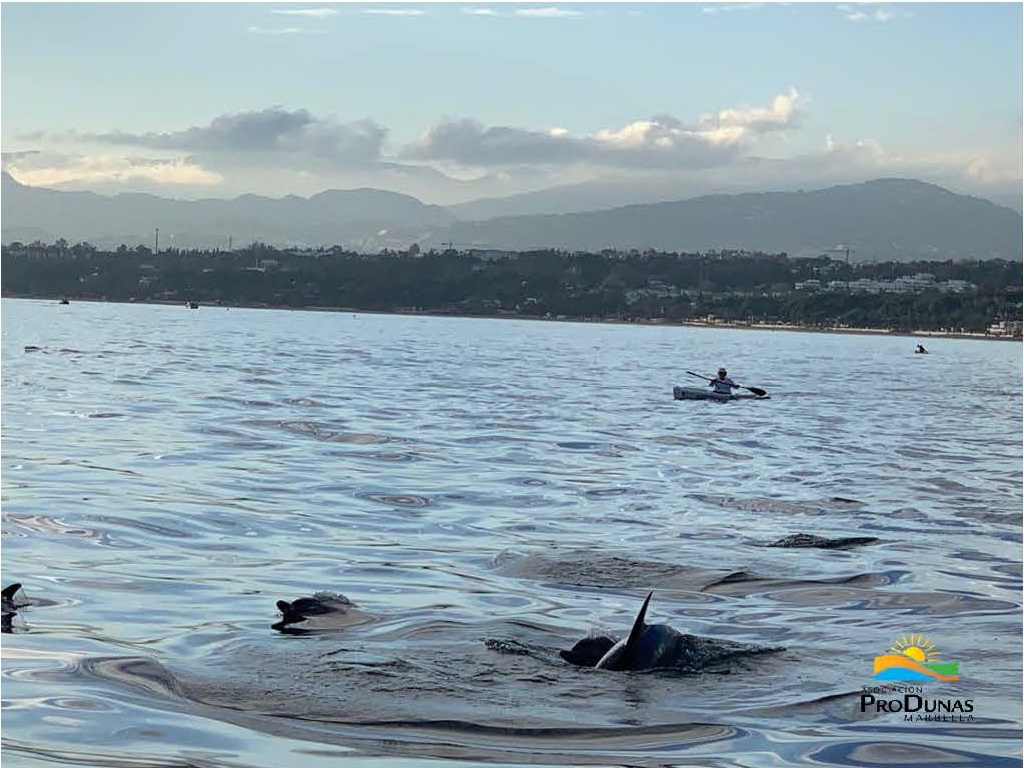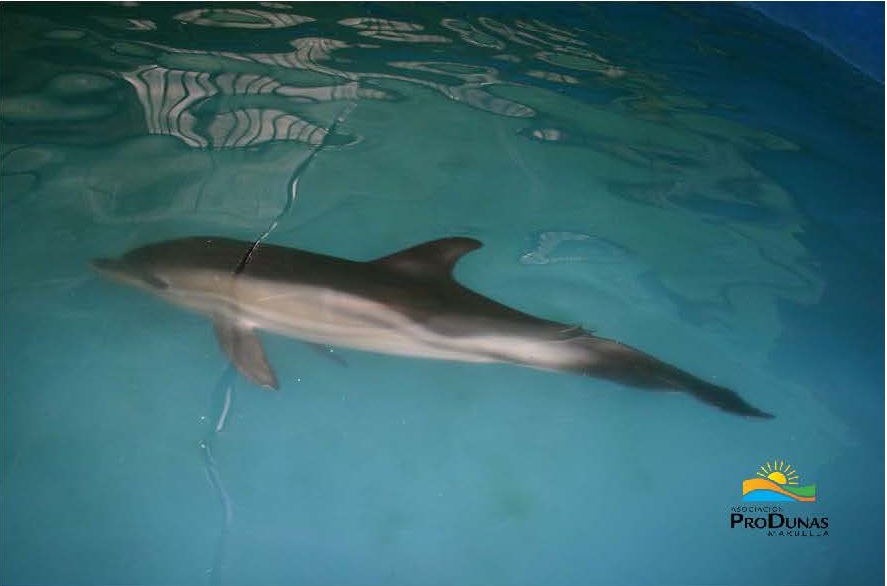SMALL SUMMER TALK WITH THE RTV TELEVISION AND ESTEFANÍA
16th of August 2022: Dolphins and the marine ecosistem
This week I would like to continue exploring the depths of the sea off our coastline to carry on learning about the great biodiversity that these waters harbour.
Because out there, at the limit of where our sight can reach, at the horizon where the sea seems to blend into the blue of the sky . . . in that area that seems so far away and that many of us know nothing about is where the main marine highway is, where the greatest coming and going of marine species that we can imagine goes on . . .
As we have recently commented, we live in a privileged area where thousands of marine species that inhabit these depths continually come and go, just off the coast.
Today I would like to talk to you about one of these species, for me one of the most special, whose evolution has made its design practically perfect for its life and adaptation to the sea . . . Whose characteristics, I believe, are worth knowing about since they really are considered to be the most intelligent species of the seas and oceans. This species that I want to talk to you about today are the dolphins.
I’m sure you’ve all heard of them and many of you will even have been lucky enough to have spotted one . . . Today I want us to get to know this species a little better.
Dolphins are marine mammals, that is, they are vertebrate animals (with a skeleton and backbone), homoeothermic (warm-blooded) and have mammary glands (breasts) that produce milk. A curious fact: the females’ breasts are hidden inside their bodies, for better streamlining to facilitate swimming, so baby dolphins are born with hairs on their noses that help them detect their mother’s breasts and be able to recognize the nipple. Shortly after birth these hairs fall off.
They belong to the group of cetaceans, which also includes whales, sperm whales, killer whales and porpoises.
They migrate over various routes to feed, reproduce or bring up their young.
They are present in most of the world’s open oceans and seas. On the coast of Malaga there are species such as the bottlenose dolphin that risk getting very close to the shore.
Other species such as common and striped dolphin, prefer deep waters, so they are very rarely seen near the shore. Most species are carnivorous and are excellent pack hunters.
The best months to spot dolphins are from May to October because this is when they are migrating.
This species is one of those right at the top of the marine food chains. They work as controllers of the ecosystem, keeping species that could proliferate explosively in check. They are indicators of the health of marine ecosystems.
Currently, because of the pressure they have been subjected to for many years, the destruction and contamination of their habitats and direct competition with man for resources, they are considered as a group in regression.
CHARACTERISTICS OF THE STRIPED DOLPHIN (Stenella coeruleoalba):
This species is more typical of deep oceans, although it can also be spotted on the Costa del Sol in Malaga. It is a very prolific cosmopolitan species and it is not uncommon to see it in shallow waters near the coast.
It is a robust dolphin, with a long and well-defined snout; its fins are short and pointy. Its body is bluish grey on the dorsal part. The white belly sports an off-white stripe in the shape of a sickle. Also they often have multiple black and white stripes on their body.
CHARACTERISTICS OF THE COMMON DOLPHIN (Delphinus delphis):
The common dolphin is an oceanic species that lives mainly in the Atlantic and Pacific oceans, although populations are also found in the Mediterranean.
They can be found both in coastal waters and thousands of kilometres from them.
Regarding its pigmentation, the dark grey colour predominates on the dorsal surface from the forehead to the dorsal fin, where it forms an inverted beak. There is a kind of “drawing” on its side that looks like an “hourglass”, yellow in colour, contrasting with a dark coloured rear portion. The dorsal and pectoral fins are dark.
CHARACTERISTICS OF THE COMMON BOTTLENOSED DOLPHIN (Tursiops truncatus):
The bottlenose dolphin is the most common species in the Mediterranean. They can also be seen in peripheral oceans and seas in both tropical and temperate latitudes.
They are characterised by their short snout, the dark blue to grey on their backs, and the light colour of their bellies. The bottlenose dolphin belongs to the threatened marine species and as such, requires special protection.
Cool facts about dolphins
- A dolphin’s dorsal fin acts like a keel when the animal swims, giving the dolphin directional control and stability in the water. The caudal fin moves from top to bottom (it is horizontal, not vertical like fish) and provides them with propulsion.
- Each dolphin has a unique name that differentiates it from the others. This is known because it has been noticed that when a new dolphin is born, the mother vocalizes the same sound several times, which has led to the belief that she is telling it what its name is.
- These marine mammals need to come to the surface at regular intervals (from 5 to 8 minutes) to breathe, which they do through the spiracle, that small hole that all dolphins have.
- Another fact about their breathing is that it is not a reflex, as in human beings, but they need to will themselves to breathe, that is, they must keep their brains awake always so that they remember that they must
So . . . how do these animals sleep? Dolphins “turn off” half of their brain when resting, the other half remains awake with a low level of attention that allows them to be aware of what is happening around them. After approximately two hours it reverses the process, disconnecting the part that was active and activating the part that was disconnected.
- They sleep with their eyes open in a vertical or horizontal position relative to the surface and they sleep swimming slowly together with others in the pod. They get into a special area in the pod where the turbulence generated by the other allows them to keep moving.
- Their sense of touch is spread all over their bodies.
- They have a unique system which permits them to know where they are and what is ahead of them, known as echolocation. This consists of a structure, called a melon, which is housed in the front part of their heads and which emits sound waves which bounce off an object or prey, and on returning to the this organ, allows them to carry out a kind of scan of the area.
- They feed by hunting in groups, using various tactics such as echolocation, bait balls (for schools of fish, swimming in circles until they trap the fish and then they take turns to feed on them) or if they cannot trap the school of fish, they corner some of them, herding them out of the bank and driving them into a narrow place where they cannot escape.
Dolphin beaching
Finally, let me tell you that the ProDunas Marbella Association has witnessed many dolphin beachings, approximately between 40 – 45 stranded animals every year. We covered 100 km of coastline between Fuengirola and Sotogrande. We worked together with CREMA (Aula del Mar), but now the Junta de Andalucía has taken over this work.
We looked after a very special dolphin that got beached. This was “Miguelito”, and together with CREMA we personally took care of him when we were free at the weekends. Susana was in charge of feeding him, firstly by tube and then working up to baby food. The dolphin “Miguelito” was a young and beautiful male with a very strong personality and character.
“Miguelito” grew up very strong and healthy and after 3 months in the Aula del Mar, Malaga (CREMA), he was returned to the sea. Our hope was that he would be allowed to join a family of dolphins that are in these coastal waters.
What to do when faced with a beaching
Here are simple guidelines which must be strictly adhered to:
The animal must not be touched and under no circumstances should it be moved or returned to the sea (either alive or dead). You have to know what you are doing to be able to identify the animal and/or its possible injuries.
Very important:
- Leave a wide space around the marine animal – at least 5m – and do not overwhelm it.
- Keep pets on a leash and stop them barking or hassling it.
- Call Emergencies 112 Andalusia, which is a public (free) service that is permanently on call for whatever emergency situation, salvage, etc.
- Have to hand precise data on the place and location of where the animal in distress is, to be able to guide the emergency services.
These are:
- the name of the municipality and the name of the beach
- the name of the hotel, apartments or chiringuito in the vicinity
Emergency 112 will contact the official Service – in this case the Andalusian Government and/or the Guardia Civil > Seprona.
Should you need emotional support or have language difficulties, you can contact ProDunas Marbella (+34 609 600 706) or the Aula del Mar Málaga and we will gladly try to help you with the official communication.
Members of the public MUST follow these simple guidelines. However we cannot stress strongly enough that these are wild animals and therefore any stranding on our beaches must be dealt with by trained professionals.
Estefanía ESPEJO GONZÁLEZ
ProDunas Marbella Marine Biologist
Do you want to receive our Newsletter?
Do you want to become a member or be our friend of the dunes?
Asociación ProDunas Marbella
The Association works tirelessly for the defence and preservation of the unique ecosystems that survive in the natural sand dune environments in the Province of Málaga; promotes the protection of native flora and small wildlife; promotes recovery, rehabilitation and conservation of interesting biodiversity of sand dunes areas in the municipality of Marbella.




